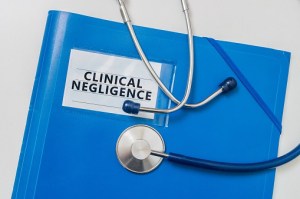 In May of 2016, Dr. Martin Makary of the Johns Hopkins University School of Medicine co-authored a study that showed medical errors are the third leading cause of death in the U.S. Among the most common types of medical mistakes are diagnostic errors – a missed, delayed or incorrect assessment of an illness of injury.
In May of 2016, Dr. Martin Makary of the Johns Hopkins University School of Medicine co-authored a study that showed medical errors are the third leading cause of death in the U.S. Among the most common types of medical mistakes are diagnostic errors – a missed, delayed or incorrect assessment of an illness of injury.
In 2015, the National Academy of Medicine (then called the Institute of Medicine) issued a report that found “diagnostic error is so prevalent in medicine that the majority of Americans will be victim to at least one ‘meaningful’ diagnostic error in their lifetimes, either due to a delayed or inaccurate diagnosis,” as reported by MedCity News. This year, with the help of a company called VisualDx, the Academy created a helpful infographic outlining just how serious the problem is.
The numbers are startling:
- 18 million diagnostic errors are made each year in the U.S.
- They result in 74,000 deaths each year.
- Of those diagnostic errors:
- 5% are made during visits to an outpatient clinic.
- 12% are considered “adverse events” in hospitals.
- 10% of the deaths caused by diagnostic errors are inpatients in hospitals.
In short, the NAM states, “nearly every person will experience a diagnostic error in their lifetime.” Not all of those errors will be life threatening, but many of them will, as evidenced by the 74,000 deaths each year related to a diagnostic mistake of some kind.
Causes of diagnostic errors
The U.S. Department of Health and Human Services determined “that clinicians frequently use heuristics (shortcuts or ‘rules of thumb’) to come up with a provisional diagnosis, especially when faced with a patient with common symptoms,” and that these shortcuts frequently lead to diagnostic errors. They classify those errors into four categories:
- Availability heuristic – when a doctor is biased by his or her experiences with past cases when it comes to diagnosing the patient at hand.
- Anchoring heuristic – when a doctor relies so heavily on his or her initial diagnosis, that he or she may ignore or deem unnecessary any subsequent findings. (This is also called “premature closure.”)
- Framing effects – making a diagnosis that is “unduly biased by subtle cues and collateral information.”
- Blind obedience – relying on the tests or on the opinions of other “experts” as opposed to looking further into the patient’s problem.
We are all, of course, biased in some way by our own past experiences, or by the thoughts and ideas of those around us. The problem is that when a doctor has a patient’s life in his or her hands, relying solely on those experiences or opinions, or being too stubborn to admit that something has changed, can lead to a tragic loss.
Overcoming these problems then falls to patients and advocates alike. We must demand that our doctors listen to what we say, and we must start asking questions that can help us. If that fails, we can rely on the civil justice system to uphold our rights under the law.
Plaxen & Adler, P.A. has protected Maryland victims of medical malpractice for more than 30 years. If you or your family member suffered harm because of a missed, incorrect or delayed diagnosis, you have legal options available to you. We invite you to call 410.505.8855 or fill out our contact form to schedule a free consultation with an experienced medical malpractice lawyer from our firm.





